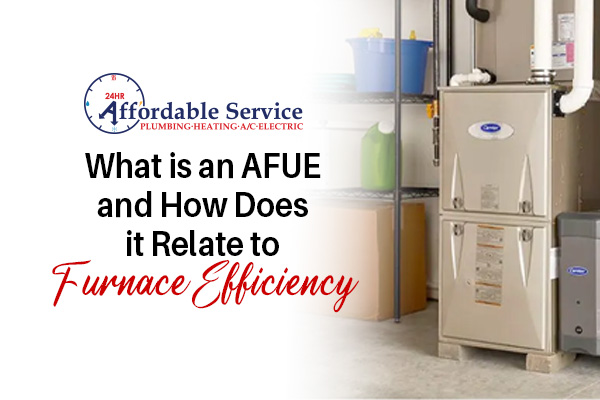AFUE, or Annual Fuel Utilization Efficiency, is a measurement of “how efficiently a furnace converts energy from the fuel it uses into warm air for your home.” Yellow tags displaying various metrics on furnace units are well-known to most homeowners. These tags indicate the furnace’s AFUE (Annual Fuel Utilization Efficiency), which is a Department of Energy (DOE) requirement. This transparency allows customers to compare furnaces and make an informed decision before purchasing. But how is this number calculated, and what should consumers aim for? We give you the 411:
How Are AFUEs Calculated?
AFUEs are typically displayed as an average on those yellow tags mentioned above. Manufacturers calculate them by dividing the total annual heating output from the furnace by the amount of fuel input over the same period. Higher ratings are better overall at heating and usually have additional features and benefits over others. Another essential thing to note when you’re in the market for a new furnace is that our team at Affordable Service can access tools and show you the potential savings difference between different AFUE numbers. We can ensure you know how the difference can impact your home throughout the furnace’s lifespan.
What AFUE Rating Should Homeowners Be Aiming For?
First, you can only purchase a minimum 80% AFUE rating furnace. This percentage is another requirement set forth by the DOE. So, suppose you have a model with anything lower; it’s safe to assume the unit is older. For those, AFUEs usually lie in the 56-70% AFUE range. Models with less than 90% AFUE are considered ‘minimum efficiency models’ and don’t have a continuously burning pilot light and are instead controlled by fans regulating combustion flow. Any rating above 90% means the unit is highly efficient and includes extra features like heat exchangers, sealed combustion systems, and ‘intelligent controls’ that help run it expertly, reducing stress on the unit.
When purchasing a new furnace, it is important to consider the Annual Fuel Utilization Efficiency (AFUE) rating. Still, there are other factors to take into account. It would be best if you also considered various factors like the price differences between natural gas and heating oil and the insulation in your home. These will help you make an informed decision and select an efficient and cost-effective furnace. When you’re ready to purchase a new furnace, our team at Affordable Service will be here to help. We’ve been serving Rio Rancho and Albuquerque area homeowners for more than 36 years. Our experts can go over several factors with you so you can make a confident choice. Call us at 505.255.4328 or visit https://asph.com/heating/ to schedule your consultation today!
